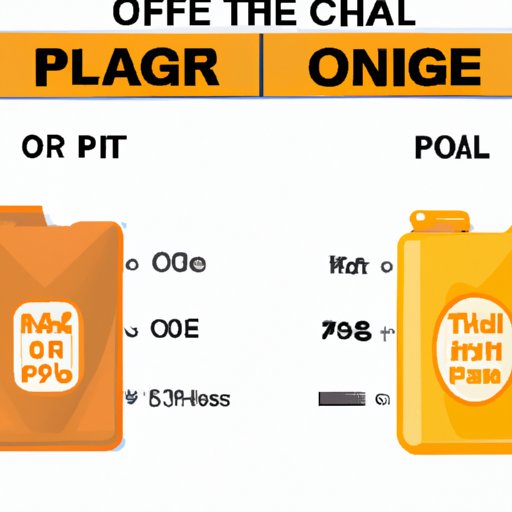
How To Change Your Car’s Oil: A Step-By-Step Guide
Changing your car’s oil is an important maintenance task that can help extend the life of your engine. The process may seem daunting, but with the right tools and knowledge, it’s something that most people can do on their own. In this article, we’ll provide a detailed, step-by-step guide to changing your car’s oil, as well as tips for avoiding common mistakes and cost comparisons between doing it yourself or taking it to a professional garage.
Step-By-Step Guide
Before you begin, make sure you have the supplies you need. This includes a new oil filter, a container for the old oil, fresh oil, an oil filter wrench, and a socket wrench set. You can find the specific type of oil and filter recommended for your car in the owner’s manual or by checking online.
1. Prepare the Car: Park it on a level surface and let the engine cool down for at least 10 minutes.
2. Drain the Oil: Locate the oil drain plug, which is typically located on the bottom of the oil pan. Place the container for the used oil underneath and use the socket wrench to loosen the plug. Carefully remove it and the old oil will start to drain. Once the oil has finished draining, replace the drain plug and tighten it with the socket wrench.
3. Replace the Filter: Use the oil filter wrench to remove the old filter. Moisten the sealing gasket on the new filter with clean oil and screw it in by hand. Tighten the filter a quarter turn more to create a tight seal.
4. Add New Oil: Remove the oil cap under the hood and pour in the new oil. Use a funnel to prevent spills and make sure you pour in the recommended amount.
5. Check the Oil Level: Once you’ve added enough oil, replace the oil cap and start the engine. Run it for a few minutes and then turn it off. Check the oil level again with the dipstick and add more if necessary.
6. Dispose of the Used Oil: Pour the old oil into a plastic container with a secure lid and take it to a recycling center or auto parts store that accepts used oil.
An oil change typically takes between 30 minutes to an hour to complete.
Video Tutorial
If you’re new to changing your own oil or feel you need additional guidance, watching a video tutorial can be helpful. This video from The Family Handyman provides a step-by-step guide with detailed visuals.
Comparison Article
There are various types of oil, filters, and oil change kits available on the market. It’s important to choose the right one for your car to ensure proper functioning. The type of oil and filter required for your car should be listed in the owner’s manual.
The most common types of oil are conventional, synthetic, and blended. Conventional oil is the most affordable but needs to be changed more often. Synthetic oil lasts longer and is better for extreme temperatures but is more expensive. Blended oil is a mixture of conventional and synthetic oils.
Oil filters come in three different types: mechanical, magnetic and centrifugal. Mechanical filters are the most common and use filter paper to trap debris. Magnetic filters use magnets to attract metal particles, and centrifugal filters spin the oil to remove debris.
Oil change kits generally include oil and an oil filter, and some may also come with gloves or a drain pan.
When choosing a product, consider the pros and cons of each type and see which one meets your needs.
Common Mistakes to Avoid
Some common mistakes people make when changing their own oil include:
- Not letting the engine cool down before beginning the process
- Not using a proper container for the used oil
- Forgetting to change the oil filter
- Using the wrong type of oil or filter
- Over or under filling the oil level
To avoid these mistakes, always follow the instructions in the owner’s manual and double-check what you’re doing.
Cost Comparison
Doing your own oil change can save you money in the long run. The cost breakdown for changing your own oil generally includes:
- Oil – about $20-30 for a 5 quart jug
- Oil filter – around $10-15
- Oil filter wrench – $5-10
- Funnel – under $5
- Drain pan – around $10-20
The total cost of everything you need can be as low as $50.
If you take your car to a professional garage to change the oil, the average cost ranges from $50 to $100.
Investing in the equipment needed to change your own oil can save you money in the long run if you plan on keeping your car for a while.
Conclusion
Changing your car’s oil is an important maintenance task that can help extend the life of your engine. It may seem daunting, but following the step-by-step guide can make the process smoother. Watching a video tutorial, choosing the right oil and filter, and avoiding common mistakes can also make the task easier. Considering the cost of doing it yourself versus visiting a professional garage can help you decide what’s best for you.
Whether you’re a novice or a seasoned mechanic, changing your car’s oil is something achievable by most people. Now that you have all the necessary information, gear up and get started.




